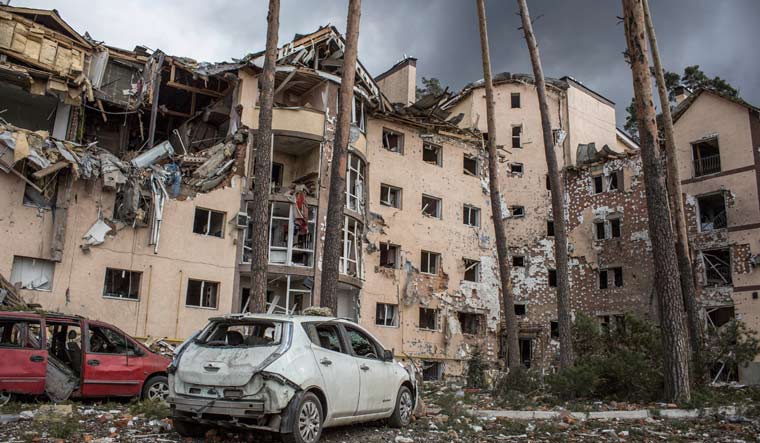Worried over rising prices? Well, there could be more in store. In the past week, as Russia intensified its attack on Ukraine and the West imposed tougher sanctions, crude oil prices continued their upward march. Brent crude oil price hit $118 a barrel, a near decadal high, factoring in the disruption in Russia, the second largest exporter.
For India, which imports more than 80 per cent of its crude oil requirements, this can have a huge impact on the current account deficit and fuel inflation across sectors. While, India’s Russian oil imports are miniscule, it is vulnerable to the general price increase.
If oil prices were not enough, prices of coal and pet coke have also risen, which will have an impact on several sectors like cement. It doesn’t end there.
Dipanwita Mazumdar, economist at Bank of Baroda points that wheat prices are at a 14-year high, while aluminium prices too have hit their peak.
“The war has impacted commodity prices almost across the board and hence no country is insulated against this impact. Countries using fossil fuels for running vehicles or heating would face a lot of inflationary pressure,” she wrote.
While petrol and diesel prices haven’t been raised since November, companies are already passing on other raw material cost increases on to consumers. Fast moving consumer goods such as soaps, detergents and shampoos have become expensive as prices of palm oil, a key ingredient, have hardened almost 48 per cent from a year ago. Palm oil is also a major ingredient in the snack foods and bakery industry, as is soyabean oil, which is going to impact product prices.
Indonesia had already curbed palm oil exports. Now, Russia’s invasion of Ukraine has hit sunflower oil exports, in turn driving prices. Russia and Ukraine account for near three-fourths of global sunflower oil exports.
Barely prices too are up 60 per cent year-on-year. This is a key ingredient in malt-based health food drinks. Biscuit makers too have raised prices as wheat, edible oil and sugar prices bite.
“India will be susceptible to secondary and tertiary impact of inflation in commodities like fuel, coal, edible oils and fertilizers,” added Mazumdar.
Madhavi Arora, lead economist at Emkay Global Financial Services says India’s current account deficit to GDP could rise 0.5 per cent with each $10 per barrel increase in crude oil prices. With oil sustaining above $100 a barrel, the current account deficit may comfortably cross 2.5 per cent of GDP in the year ending March 2023, she said.
Analysts estimate brent crude oil will remain high till at least May 2022, before steadily moderating in the second half as the US shale oil output is expected to increase.
In March post the assembly elections, there is an expectation that retail petrol and diesel prices will be raised sharply. High oil prices will also pressure airline companies, which must pay more for their aviation turbine fuel, a major expense for them. Logistics costs too could go up.
In the monetary policy committee meeting in February, the Reserve Bank of India left its benchmark interest rates unchanged and also continued to maintain an accommodative policy stance, in the expectation that the retail inflation will peak in the current quarter and then moderate. However, RBI Governor Shaktikanta Das did warn that the surge in international crude oil prices required close monitoring.
Jayanth Varma, who is a member of the monetary policy committee, was the sole dissenter in the MPC meeting last month. While, he voted in favour of keeping the repo rate on hold at 4 per cent, he said a switch to a “neutral” stance from “accommodative” was long overdue.
“As the third Covid-19 wave peters out in India, the time has come to think of the objectives of monetary policy in much broader terms than mitigate the impact of COVID-19 on the economy...Geopolitical tensions have become a bigger risk to the global economy than the virus,” he said.
Analysts say oil prices may indeed force RBI to turn hawkish in the coming months.
“A generalised surge in commodity prices will likely keep India’s CPI (consumer price index) inflation above 6 per cent year-on-year in March-April 2022, nudging the RBI to raise the Repo rate by 50 basis points in April-July 2022,” said Prasenjit Basu, chief economist at ICICI Securities.





